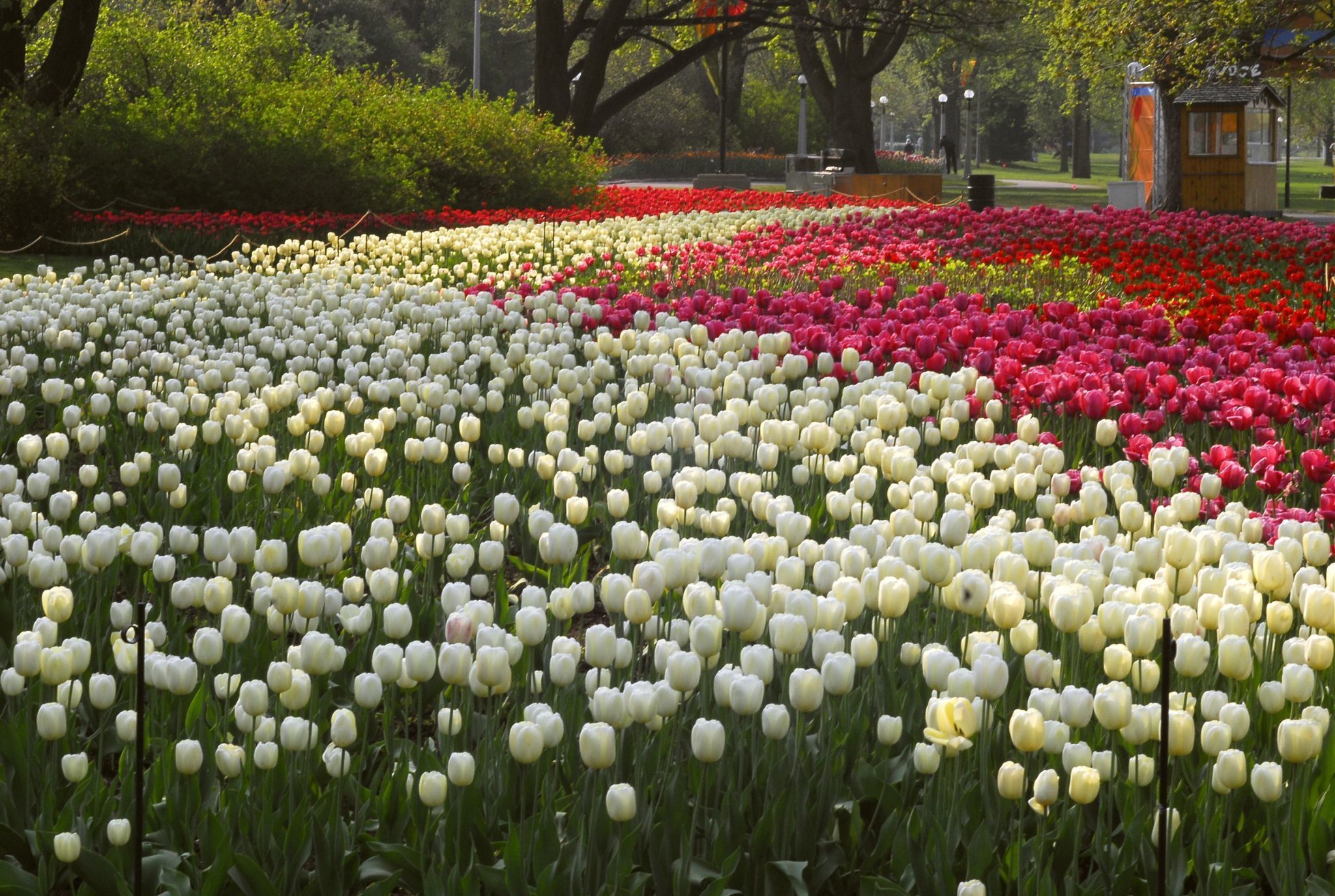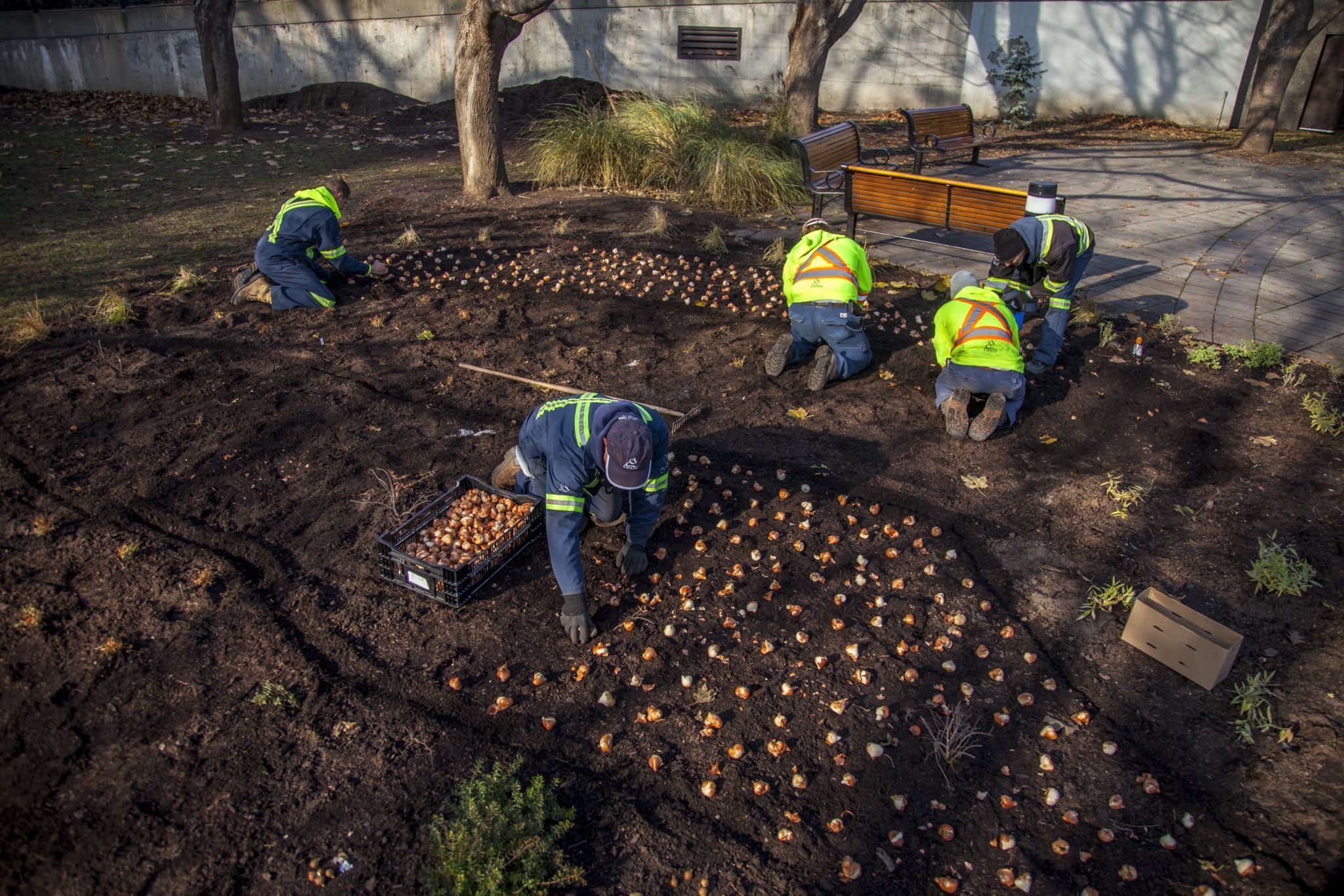
Christine Mailhiot
Former Communications Assistant
Every spring, tulips take over the National Capital Region.
We’ve now been enjoying these beautiful flowers for over 70 years in Ottawa–Gatineau. This tradition dates back to the Second World War, when the Netherlands gave 100,000 tulip bulbs as a postwar gift to Canada for our role in that country’s liberation. Tulips are a symbol of lasting friendship between Canada and the Netherlands.
What other unique facts lie behind our beloved tulips? Here are six things you probably didn’t know about tulips.

1. Tulips are edible
Does that surprise you? If so, you may also be surprised to learn that our dear tulips are cousins with onions and garlic. Indeed, tulips are part of the Amaryllidaceae family, which also includes garlic, onions and other “bulb” plants. Like all Amaryllidaceae plants, both the tulip flowers and underground bulbs are edible.
During the Second World War, a terrible famine struck the Dutch countryside, and the people of the Netherlands ate the tulip bulbs rather than planting them as they had done for centuries.
2. The NCC plants enough flowers to cover nine NHL hockey rinks

We manage over 120 flower beds in Ottawa and Gatineau. Every spring, you can see close to a million tulips of 100 different varieties in bloom in our parks. The total planting area is approximately 14,000 m². That’s about nine NHL hockey rinks!
Each and every one of our flower beds is packed with tulips. In NCC-managed parks, we plant 50 to 60 tulip bulbs per square metre in regular flower beds, and up to 75 tulip bulbs per square metre in beds with a special design. In comparison, at Keukenhof, the 32-hectare Garden of Europe in the Netherlands, they plant approximately 40 tulip bulbs per square metre, and around 60–80 bulbs in special beds.
3. We often get help from unofficial gardeners
Tina Liu is the NCC’s landscape architect and artist behind the flower beds that colour the Capital. But she’s not the only one who contributes to the region’s floral arrangements. We often get help from some of the most unpredictable little artists: squirrels.
The little rodents seem to have fun digging up and replanting tulip bulbs. If you’ve ever noticed a tulip that is different or stands out from the others in our beds, it’s most likely the work of our unofficial gardeners. Their work contributes to the general surprise and wonder we feel when the tulips bloom each spring.
4. There is a tulip for (almost) everyone

It seems that everyone loves tulips — and many people even have a secret favourite. But, if you’ve been keeping an eye out for the perfect blue tulip in Ottawa–Gatineau, you’ll be searching for a very long time.
That’s because tulips come in every colour of the rainbow, except blue. There is no natural blue pigment in tulips. However, many tulips have “blue” in their names, such as “Blue Parrot,” “Blue Aimable” and “Blue Wow,” but these tulips are actually shades of violet. Regardless of the slight confusion that their names may cause for onlookers, the tulips themselves are beautiful!
5. Planning starts over a year before tulips bloom
Our experts start planning the flower bed designs about 12 to 18 months before the tulips bloom. Here’s what a regular year looks like.
Spring
While you’re out admiring the tulips in bloom, we are already planning for the next year. In fact, tucked away in Commissioners Park, the host of the Canadian Tulip Festival, is our test bed. In this particular bed, you can see some new and reintroduced tulip varieties planted in panels for monitoring purposes. We test them based on their performance and quality before mass planting them in our regular flower beds the following year.
Summer
As soon as the tulips wilt and are replaced with annual plants, our team designs arrangements, checks availability and orders bulbs.

Fall
After the annual plants are removed from the beds, we adjust the soil with compost, as needed. The tulip bulbs are planted in mid- to late October. It takes our contractors approximately three weeks to plant bulbs in all 120 beds in Ottawa and Gatineau. We then install snow fences to protect the beds from debris and wildlife during the winter.
Early spring
When the snow melts, we inspect the sites, and remove the fences — usually in April. Then, we wait for the show. Our landscape architects plan the tulip beds with different varieties and combinations to ensure that we have approximately four weeks of display. Tulips are removed when they start to wilt. We then plant annual plants in the beds, usually in early June.
6. Our tulips get a second life
Tulips receive one of three fates. Some lucky tulips stay in the ground to be part of the next year’s show. We leave these bulbs in their beds after the flowers and leaves wilt. Then, on top of the tulip bulbs, for the summer and fall displays, we plant annual flowers with shallow root systems that will not disturb the bulbs.
We donate some other bulbs as part of our bulb donation program to non-profit organizations or schools. For the rest of the bulbs that can’t be treated as perennials in our climate, we compost them and turn them into food for our many gardens across Ottawa and Gatineau.
Did this blog make you want to take a closer look at these amazing tulips? Visit our tulip web page to see our latest work, and find the best places to see them.